Related Research Articles

Shute Barrington was an English churchman, Bishop of Llandaff in Wales, as well as Bishop of Salisbury and Bishop of Durham in England.
Richard Barnes was an Anglican priest who served as a bishop in the Church of England during the reign of Elizabeth I.

Benjamin Hoadly was an English clergyman, who was successively Bishop of Bangor, of Hereford, of Salisbury, and finally of Winchester. He is best known as the initiator of the Bangorian Controversy.
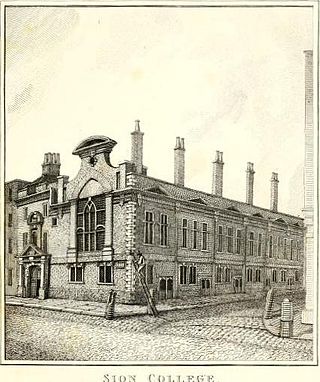
Sion College, in London, is an institution founded by royal charter in 1630 as a college, guild of parochial clergy and almshouse, under the 1623 will of Thomas White, vicar of St Dunstan's in the West.

Peter Mews was an English Royalist theologian and bishop. He was a captain captured at Naseby and he later had discussions in Scotland for the Royalist cause. Later made a bishop he would report on non-conformist families.

William White was the first and fourth Presiding Bishop of the Episcopal Church of the United States, the first bishop of the Diocese of Pennsylvania (1787–1836), and the second United States Senate Chaplain. He also served as the first and fourth President of the House of Deputies for the General Convention of the Episcopal Church.

Thomas Thurlow (1737–1791) was an English Anglican bishop who served as Bishop of Lincoln and as Bishop of Durham in the late eighteenth century.
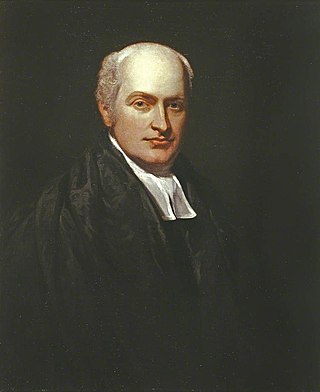
Edward Maltby was an English clergyman of the Church of England. He became Bishop of Durham, controversial for his liberal politics, for his ecumenism, and for the great personal wealth that he amassed.

St Botolph without Aldersgate is a Church of England church in London dedicated to St Botolph. It was built just outside Aldersgate, one of the gates on London's wall, in the City of London.

The Worshipful Company of Parish Clerks is one of the Guilds of the City of London. It has no livery, because "in the 16th century, the Parish Clerks declined to take the Livery on the grounds that the surplice was older than the Livery and was the proper garb of members of the Company." It is not, therefore, technically a livery company although to all intents and purposes it acts as such. It is one of two such historic companies without livery, the other being the Company of Watermen and Lightermen.
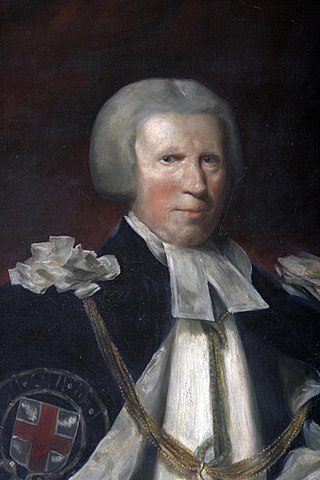
Sir George Pretyman Tomline, 5th Baronet was an English clergyman, theologian, Bishop of Lincoln and then Bishop of Winchester, and confidant of William Pitt the Younger. He was an opponent of Catholic emancipation.

Brian Duppa was an English bishop, chaplain to the royal family, Royalist and adviser to Charles I of England.

James Montague was an English bishop.
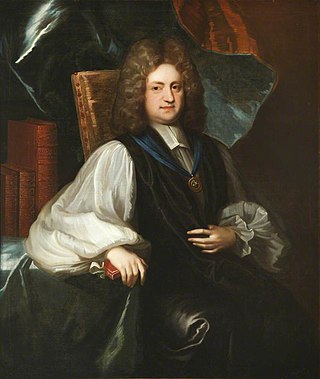
Charles Trimnell (1663–1723) was an English Anglican bishop. He was a Whig in politics, and known for his attacks on High Church views, writing on the subordination of the Church of England to the state. After the accession of George I of Great Britain in 1714 he was in the royal favour and influential.
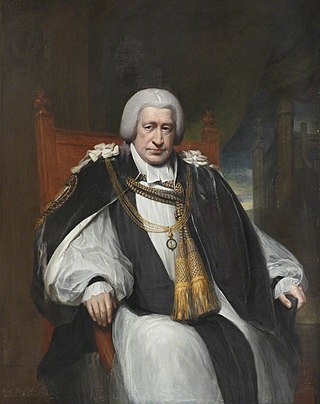
Brownlow North was a bishop of the Church of England.

Fugglestone St Peter was a small village, manor, and civil parish in Wiltshire, England, lying between the town of Wilton and the city of Salisbury. The civil parish came to an end in 1894 when it was divided between the adjoining parishes, and today Fugglestone is a largely residential area in the north of Wilton parish; however, the 13th-century parish church survives.

Henry Bathurst was an English churchman, a prominent Whig and bishop of Norwich.
Andrew Bromhall, was an English divine.
References
- ↑ "St Alban Wood Street (CCEd Location ID 11550)". The Clergy of the Church of England Database 1540–1835 . Retrieved 24 November 2016.
- ↑ "St Alban Wood Street with St Olave Silver Street (CCEd Location ID 11551)". The Clergy of the Church of England Database 1540–1835 . Retrieved 24 November 2016.
- ↑ "Seare, Richardus(1689–1743) (CCEd Person ID 166263)". The Clergy of the Church of England Database 1540–1835 . Retrieved 24 November 2016.
- ↑ "All Hallows Barking (CCEd Location ID 11537)". The Clergy of the Church of England Database 1540–1835 . Retrieved 24 November 2016.
- ↑ "Geekie, William(1721–1767) (CCEd Person ID 207)". The Clergy of the Church of England Database 1540–1835 . Retrieved 24 November 2016.
- ↑ "Geekie, William (GKY706W)". A Cambridge Alumni Database. University of Cambridge.
- ↑ "All Hallows Bread Street (CCEd Location ID 11538)". The Clergy of the Church of England Database 1540–1835 . Retrieved 24 November 2016.
- ↑ "All Hallows The Great (CCEd Location ID 11540)". The Clergy of the Church of England Database 1540–1835 . Retrieved 24 November 2016.
- ↑ "Hussey, Christopher(1713–1761) (CCEd Person ID 275)". The Clergy of the Church of England Database 1540–1835 . Retrieved 24 November 2016.
- ↑ "Hussey, Christopher (HSY703C)". A Cambridge Alumni Database. University of Cambridge.
- ↑ L. Tyerman (1870). The Life and Times of the Rev. John Wesley, Founder of the Methodists. Hodder and Stoughton. p. 548.
- ↑ "The Surman Index, Bethnal Green, Middlesex" . Retrieved 24 November 2016.
- ↑ Walter Wilson (1814). The History and Antiquities of Dissenting Churches and Meeting Houses, in London, Westminster, and Southwark. p. 368.
- ↑ "Chapman, Samuel (CHPN649S)". A Cambridge Alumni Database. University of Cambridge.
- ↑ "(CCEd Person ID )". The Clergy of the Church of England Database 1540–1835 .
- ↑ "The Surman Index, Sheffield, William" . Retrieved 24 November 2016.
- ↑ Wilson, Walter (1810). Dissenting Churches. author; sold. p. 311.
- ↑ Wilson, Walter (1808). "The History and Antiquities of Dissenting Churches and Meeting Houses, in London, Westminster, and Southwark: Including the Lives of Their Ministers, from the Rise of Nonconformity to the Present Time : With an Appendix on the Origin, Progress, and Present State of Christianity in Britain".